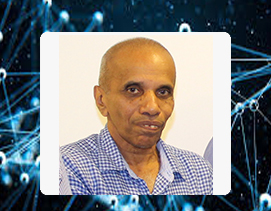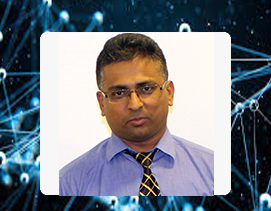Development of a Model Treatment Facility for Remediation of Total Dissolved Solids and Fluoride in Groundwater – A Sustainable Solution for Dry Zone Drinking Water Problems
NRC Grant No: NRC TO 16-15
Research Institute: University of Peradeniya
Amount Funded: Rs. 49,900,000.00
Date of Awarded: 29th December 2016
End Date: 29th December 2021


Summary
Abundance of safe water is a wealth of a nation. In compliance with UN Sustainable Development Goals, the provision of clean water to the entire nation without any discrimination is set at the highest priority in all development plans of the Government of Sri Lanka. Presently, the Government of Sri Lanka targets to provide pipe-borne water to the entire nation by 2030. Sri Lanka is not a water scarce nation! However, the distribution of water resources is uneven. Presently 14% of the population (~3 million) largely living in dry zone does not have access to safe water sources within 200 m periphery. Water quality problems are acute in the dry zone; new strategic solutions are urgently required short circuiting state set targets. This project proposes how such targets can be achieved sustainably.
It is important to note that apart from boiling or so, the consumers should not engage in any treatment for the water they consume, but they will enjoy the safe water provided by the state authority (National Water Supply and Drainage Board, NWSDB) without any discrimination. However, they should play an active role in the protection of water resource. To date, the policy makers, engineers, academicians, industrialists, and technologists alike are aware about the acute water problem in the dry zone; the underlying reasons due to palatability issues are fairly well known; although not sustainable in Sri Lanka, the appropriate remedial measures are also available globally. However, the water problems in dry zone largely remain unsolved to date. Presently the NWSDB as well as Private Organizations have commenced interim measures to resolve the pressing drinking water issues with a limited success. Bowser driven water distribution is currently operational under surveillance of NWSDB. Several rainwater harvesting plants at household scale are installed and the people consumed water consumed directly without an electrolyte balance. The consumption of bottled water for drinking purposes has also increased. However, manufacturers’ adherence to bottled water regulations is questionable, raising concerns regarding their safety. Safety scrutiny of household water filters is also required.
Technology based on sorption and electro-coagulation has been introduced to remove excess fluorides. Due to use of low efficient substrates for sorption, massive loads of wastes are created. Recently, water treatment plants based on reverse osmosis (RO) are also introduced. In RO technology total solutes present in water are removed, and subsequently required quantities of ions are added. We believe that the natural water cannot be synthesized to meet stringent consumer tastes. The discharge of RO wastes can also lead to a serious environmental issue in the future. Most of the treatment units designed for fluoride and hardness removal is not efficient or overdesigned utilizing primitive technology; as a result, they create massive wastes and serious issues are experiencing with respect to water distribution and equipment maintenance. To respond to this exigency, we will propose a state-of-art treatment technology to improve water palatability. The proposed technology will control natural contaminants in water; we discourage treatment of anthropogenic pollutants; in principle, they can be prevented through efficient source water protection programs.
The project comprises six deliverables. Most of the consumables required for proposed treatment facility (deliverable #1) will be fabricated using indigenous raw materials. To reject excess major constituents in water, the unit process based on tunable nanomembranes will be fabricated utilizing Sri Lankan graphite (deliverable #2). Super sand filters will be introduced for turbidity removal and water conditioning (deliverable #3). Low energy solar driven electro coagulation – precipitation unit process will be introduced to removal fluoride (deliverable #4). Each well site (and future extraction locations) in the dry zone will also designate with an integrated water quality index score for rapid screening (deliverable #5). In compliance with the National Policy on Protection and Conservation of Water Sources in Sri Lanka a scientifically defensible source groundwater protection plan along with community training module will also be developed (deliverable #6). The technologists required for the plant operation, maintenance and community training will be trained from the university graduates majoring technology. The proposed water treatment module plant will also be used for in-plant training of university undergraduates. The capacity building programs include strengthening the NWSDB monitoring and surveillance laboratory, materials characterization bio-assays and data processing facilities, professional training, nanomembrane fabrication, community education and outreach programs, technology transfer, peered research discussion seminars. The project seeks partnerships among academia, industry and community organizations. The core researchers will direct each research group to reach project deliverables. However, expertise is required on groundwater modeling and graphite based nanomembrane fabrication (commercial scale) in Sri Lanka. Chinese Academy of Sciences has kindly agreed to offer this training through their already available bilateral programs. The beam line facilities of the synchrotron for the identification of aqueous chemical species have already been arranged. The scientists at KIT (Germany) and Lublin University of Technology (Poland) will collaborate with specialized spectroscopic measurements/ interpretations. All international laboratories are presently active via country to country memorandum of understanding. As identified in the National Science and Technology Development Plan of Sri Lanka (NASTEC), the project deliverables will focus on firm scientific foundations to minimize the widening disparity between rural and urban sectors that retards leap frog development of the nation.
Objectives
- Development of state of art community level treatment facility to improve water palatability. The electro-coagulation (EC) facility will be utilized to control excess fluoride whereas nano membrane filtration (NF) will be used for TDS removal. The total facility will be developed in a flexible manner to assess efficiency of EC and nano membrane filtration unit processes. The proposed facility will be designed to assess alternative electrodes and new membranes as required. In compliance with green technology principles, well characterized commercial grade carbon or cellulose nano membranes (nano membrane filtration unit process) and Fe based electrodes (EC unit process) will initially be used. Parameters optimization of the operational conditions of the model treatment plant will be made to suite stringent conditions. Wastes will be characterized and membrane-contaminant interactions will be examined to resolve membrane fouling issues (Work Package #1).
- Fabrication of tunable carbon nano membranes (NM), super sand, and novel Fe – C composites for electrodes employing Sri Lankan vein graphite and sea sand as source materials. The materials will be characterized systematically for performance enhancements. Improvement of unit process will be executed under following work packages; work package (WP) #2: fabrication of super sand filter; WP #3: fabrication of graphite based carbon nano membranes; WP #4: fabrication of electro-coagulation – electro-precipitation (EC-EP) unit.
- Development of scientific methodology for source water protection plan. The project requires identification of source/s water to feed proposed treatment facility. Identification of proper water source/s with minimal or no contamination by anthropogenic pollutants is utmost important. However, treatment methods are required to regulate lithogenic (natural) water pollutants. An awareness program on source water protection will also be developed (Work Package #5).
- Methodology development for identification /prediction of chemical species of selected trace elements in raw and treated water by in situ spectroscopic and theoretical methods. Selected chemical species will be bio-assayed (Work Package #6).
Major Equipment Facilitated by Grant
- Scanning electro-chemical system
- Ion chromatograph + auto analyzer
- Particle size analyzer (nano)
- Closed automated microwave digester
- Automatic titrator
- Chemical vapour deposition system (including oven, tube furnace etc.)
- Upgrade IR/ Raman spectrometer
Research Team
Designation
Principal Investigator (PI)
Deputy Principal Investigator (DPI)
Co- investigator
Co- investigator
Co- investigator
Name
Prof. Rohan Weerasooriya
Dr. S. K. Weragoda
Dr. A Bandara
Dr. Ajith Herath
Dr. A.R. Kumarasinghe
Institute
National Institute of Fundamental Studies (NIFS)
National Water Supply and Drainage Board
University of Peradeniya
Rajarata University
Uva Wellassa University
University of Sri Jayewardenepura
